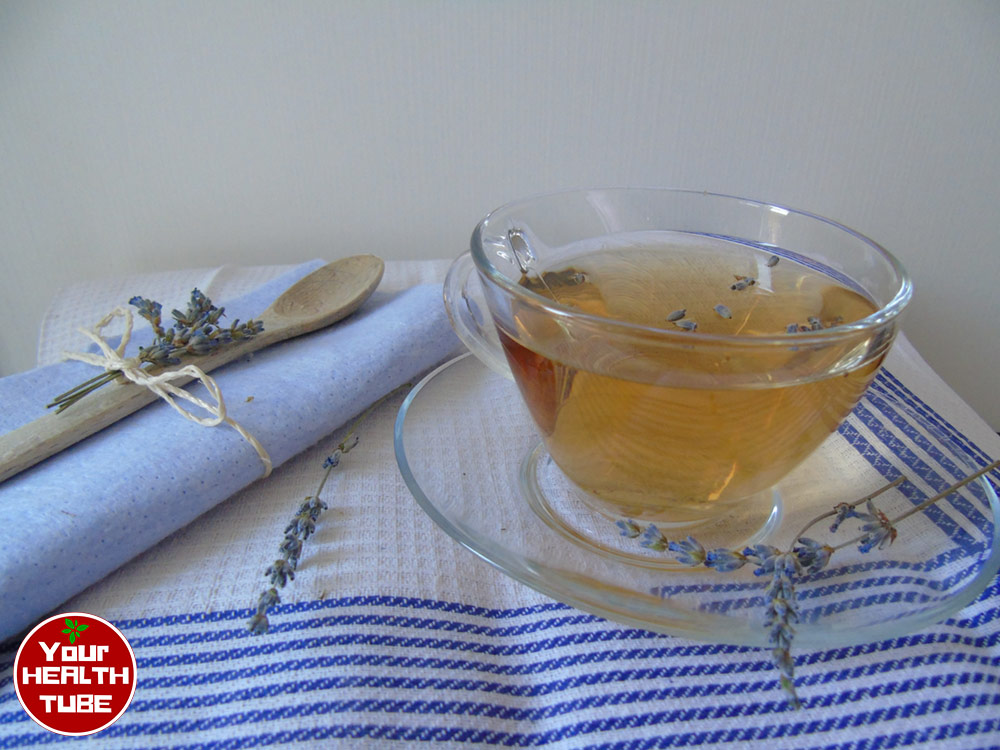Lavender tea is definitely one of my favorite teas! Not only it’s tasty, but it has numerous health benefits. Lavender is a sweet-smelling, relaxing herb, and it can be used in cooking, baking, tea making, tinctures, lotion making, and gourmet cooking and much more.
Health Benefits of Lavender Tea
The flavor and scent are pleasing, but the real bonus of lavender tea comes from its amazing health benefits that we will explore in greater detail below.
- Promotes Relaxation
Inducing relaxation is a traditional use of this tea, mainly because of the great soothing aroma. According to reports from the University of Maryland Medical Center, scientific studies submit that inhaling the aroma of lavender can slow the activity of the nervous system, promoting relaxation 1 . This can aid with stress, anxiety, depression, and insomnia. A research published in the “Journal of Alternative and Complementary Medicine” (September 2011 edition) found that participants who were treated by inhaling lavender essential oil experienced decreased levels of pain and a great reduction in stress levels when hypodermic needles were injected 2 . Preparing a tea from lavender helps release the oils responsible for the beneficial scent.
- Relieves Digestive Problems
Another traditional use for this tea is for digestive problem relief, including indigestion and nervous stomach. Modern studies claim that this might be a valid use. A research published in the “Life Sciences” journal (November 2004) claim that lavender essential oils can protect against the formation of gastric ulcers and can relieve indigestion 3 .
- Spasms and Convulsions
A spasm often results in a muscle staying contracted. A convulsion is similar and usually appears when a muscle contracts and relaxes quickly reluctantly, causing your body to shake. Lavender tea has been found to be really beneficial in reducing both convulsions and spasms. A research published in the “Journal of Ethnopharmacology” (July 2000) discovered that rats were given a little dose of lavender experienced decreased spasms and convulsions, which was assumed to be a result of the herb blocking the calcium channel, which is a main part of the muscle contraction processes 4 .
- Treats Migraine
Consuming lavender tea reliefs essential oils that can help relieve migraines. A research by experts at Mashhad University of Medical Sciences discovered that inhaling lavender oil can help manage an acute migraine 5 . The study that was published in “European Neurology” (April 2012) involved 47 people who were suffering from a migraine. A group was requested to inhale lavender essential oil for 15 minutes, while the placebo gulped paraffin for a similar time period. In the end, it was found that the percentage of people that inhaled lavender responded better to a migraine than the placebo 6 .
- Other Uses
Lavender tea has other great uses, though many of them aren’t backed by scientific research. Other ailments this tea may include colic, toothache, loss of appetite, cancer, acne, vomiting, nausea and use as a mosquito repellent.
Lavender Tea Recipe
How to Make Lavender Tea?
You can use either fresh or dried lavender flowers to make lavender tea, which is also known as a Tisane.
You can gather some fresh lavender flowers of good color or simply use culinary lavender.
You will need:
- 3 tbsp. fresh lavender flowers, or 1 1/2 tbsp. dried lavender flowers
- 2 cups of boiling water
- 1 tsp. of honey and some lemon (if desired)
Instructions:
In order to make this tea, you should put the flowers in a container or teapot along with the boiling water and leave them about 4-5 minutes. Next, stain it so you can remove the flower buds. Pour into cups. Serve the tea with some honey and sliced lemon.
Safety Concerns
Lavender tea is relatively safe, but it can cause problems, especially if you are taking medicines that depress the central nervous system. Drugs that might cause issues when taken with lavender tea include CNS depressants, chloral hydrate, and barbiturates, usually referred to as sedatives. In case you have some type of allergic reaction, such as a throat closure or rash, discontinue use of this tea.
Conclusion:
Lavender Tea benefits include that of being relaxing and calming. Great for soothing stomach discomfort, jangled nerves, migraines, and much more. Lavender tea is a convenient way to enjoy lavender wherever you may be. Plus, you can make your own lavender essential oil and enjoy the relaxing scent even more.
